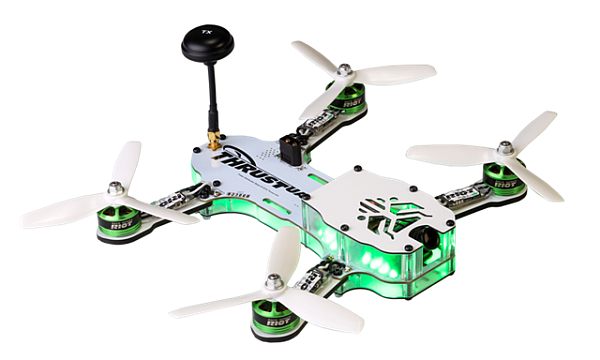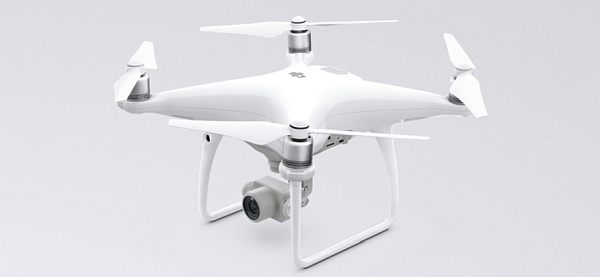Podcast: Play in new window | Download (Duration: 32:10 — 22.1MB)
Hunting with drones and the fair chase concept, autonomous agile flight, thermal mapping to reduce building heat loss, Trick or Treat, the delivery drone hold-up, UAS over wildfires, and a LAANC update.
UAV News
Outdoors in Maine: Drones in the woods, and the ethical debate over whether they belong
The law in Maine says hunters cannot use drones to locate game. According to Title 12 Section 11216 Hunting with aid of aircraft, “A person on the ground or airborne may not use an aircraft to aid or assist in hunting bear, deer or moose.” Section 10001(1) defines an aircraft as “a machine or device designed for flight.” In 2014, Colorado became the first state to outlaw the use of drones for scouting, hunting, and taking wildlife. The concept of “fair chase,” a registered trademark of the Boone and Crockett Club, comes into play.
Watch these autonomous drones zip through the woods
Rapid autonomous flight in complex and changing environments is difficult, but researchers at the University of Zurich in conjunction with Intel Labs are tackling this problem. Using simulations, they are training drones to imitate expert human pilots for autonomous agile flight.
Video: Learning High-Speed Flight in the Wild (Science Robotics, 2021)
Project webpage: Learning High-Speed Flight in the Wild
Warren, MN, uses drones, thermal sensors to map its heat-leaking homes
The Minnesota town of Warren is using a drone to help residents cut their energy costs. Warren is a Climate Smart Municipalities Partnership member where cities in Minnesota and Germany link up for sustainability and climate initiatives. They used a thermal sensor-equipped drone to produce a municipal map showing structural insulating inefficiencies and losses of heat. Pilots and drones came from Northland Community College.
Drones have fun at Halloween 2021
This is a compilation of drone Halloween videos and photos, including a drone light show in Dallas produced by Sky Elements Drone Shows, flying witch drones, trick or treating robots, and an Australian youngster dressed up as a Wing delivery drone.
Amazon Drone Delivery Was Supposed to Start By 2018. Here’s What Happened Instead
In 2013, Amazon announced an experimental drone delivery service. Now it’s 2021, almost 2022. Where are the Amazon delivery drones? Amazon Prime Air is still committed to delivering packages by drones, and they say, “We are pioneering new ground and it will continue to take time to create the right technology and infrastructure to safely deliver packages to customers.” In the U.S., drone delivery is paced by the FAA as it develops the regulatory framework.
Hybrid rotor/fixed wing drone was used extensively over Schneider Springs Fire
In August and September 2021, the Schneider Springs Fire in Washington burned more than 107,000 acres. An L3 Latitude Engineering FVR-90 unmanned aircraft was used to monitor the fire. The eVTOL uses four electrically-powered rotors to take off, and then transitions to horizontal flight driven by a rear-mounted gasoline-powered propeller. It can fly for up to 12 hours and fly at an altitude of 10,000 to 12,000 feet. Visual video cameras and heat-sensing infrared sensors monitor and map fires, with images transmitted to the ground in real-time.
Video: UAS Type 1 Drone Used on the Schneider Springs Fire
Unmanned aircraft on wildfires — what have we learned?
Incident Management Teams used other drones on the Schneider Springs Fire. A Type 3 UAS was used at night for Plastic Sphere Dispenser (PSD) burning operations. This drone could access areas of the fire that were inaccessible to other aircraft and provided better intel and risk management. A number of challenges remain.
LAANC Update: Refined Airspace Grids & Night Drone Authorizations
The latest generation of FAA’s Low Altitude Authorization and Notification Capability (LAANC) introduces authorization requests for nighttime drone flights in controlled airspace, as well as refined airspace grids. Skyward customers can request automated and near real-time access to controlled airspace for any time of day, as well as request higher altitude LAANC authorizations in portions of controlled airspace. Skyward is one of seven FAA-approved LAANC UAS Service Suppliers.
This next generation of LAANC is available on the Skyward web platform as well as the Skyward InFlight mobile app for iOS and Android. Users can request airspace access and view authorization documents in the office or the field.



